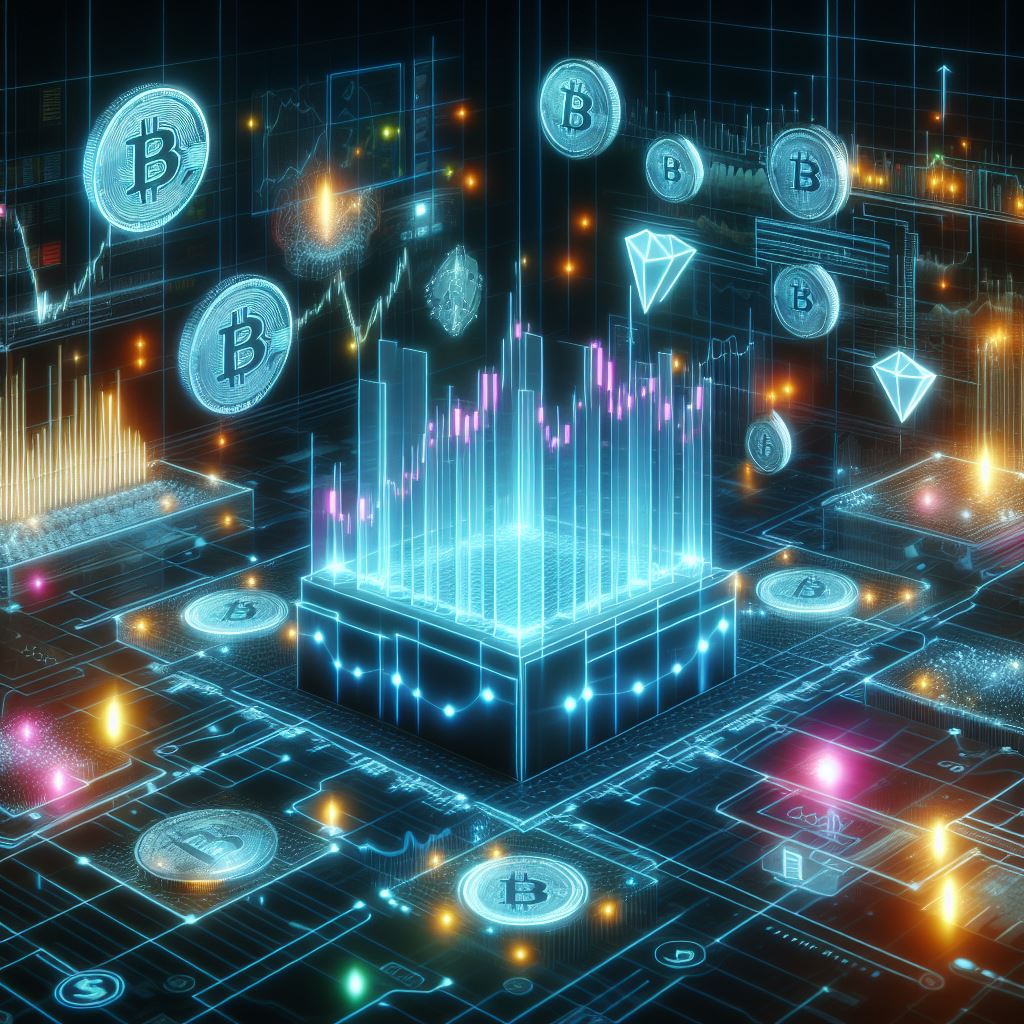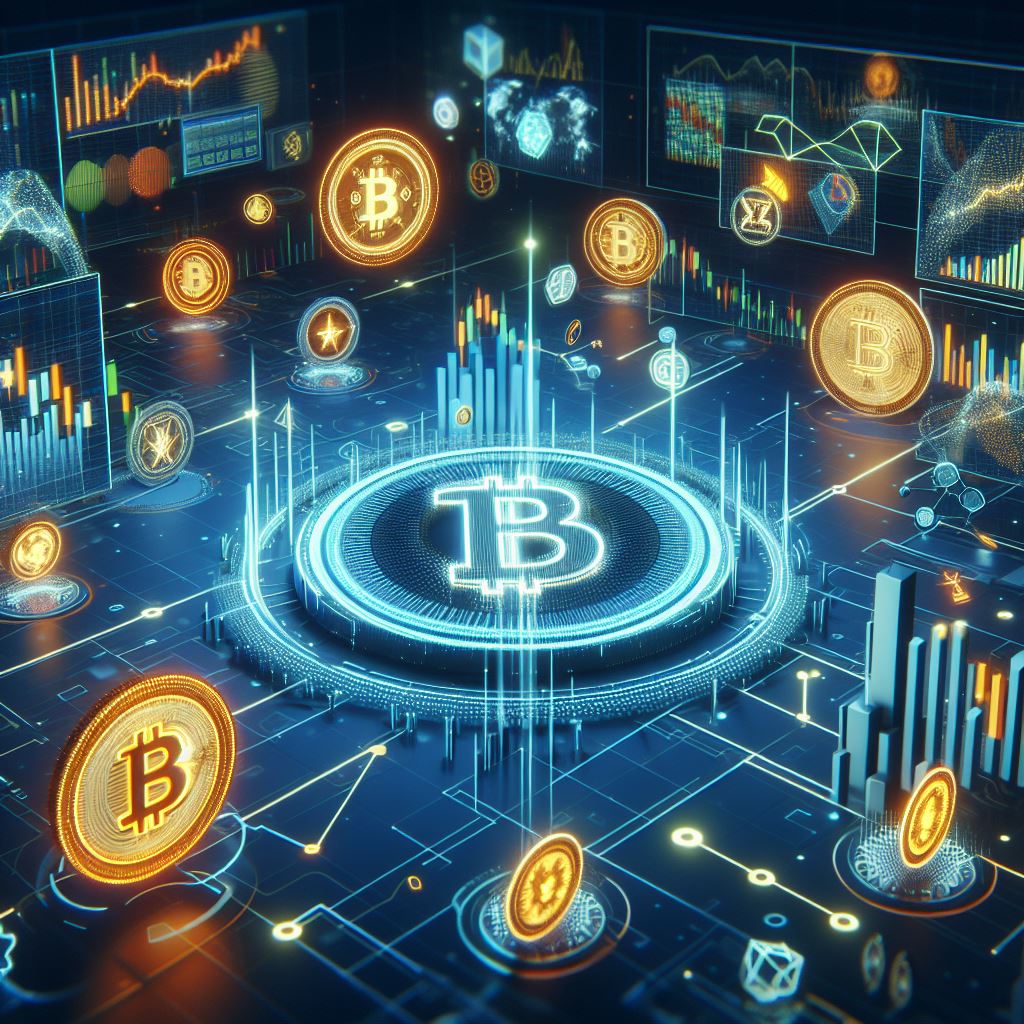Key Takeaways:
- DeFi coin tokens are cryptocurrencies powering decentralized finance (DeFi) applications and protocols.
- They serve various functions, including governance, incentives, fees, and collateral.
- Popular DeFi coin tokens include Ethereum, Uniswap, Aave, Compound, and Maker.
- DeFi tokens enable users to participate in lending, borrowing, yield farming, and other DeFi activities.
- Understanding tokenomics, risks, and the governance models of DeFi tokens is crucial for participation.
I. Introduction to DeFi Coin Tokens
A. What are DeFi Coin Tokens? DeFi coin tokens, also known as DeFi tokens, are cryptocurrencies that power the decentralized finance (DeFi) ecosystem. These tokens serve as the native assets of various DeFi applications, protocols, and platforms, facilitating various functions within the DeFi space.
B. The Rise of Decentralized Finance (DeFi) Decentralized finance, or DeFi, is a rapidly growing movement that aims to create an open, transparent, and permissionless financial system built on blockchain technology. DeFi removes the need for traditional intermediaries like banks by enabling peer-to-peer financial services and products through decentralized applications (dApps) and smart contracts.
C. Role of DeFi Tokens in the DeFi Ecosystem DeFi coin tokens play a crucial role in the DeFi ecosystem by enabling users to participate in various DeFi activities and protocols. These tokens serve as the fuel that powers the DeFi engine, facilitating functions such as governance, incentives, fees, and collateral within the decentralized finance landscape.
II. Key Functions of DeFi Coin Tokens
DeFi coin tokens serve various purposes within the DeFi ecosystem, including:
A. Governance and Voting Rights Many DeFi protocols and platforms operate using decentralized governance models, where token holders can participate in decision-making processes by voting on proposed changes or upgrades. DeFi coin tokens often grant voting rights and governance powers to their holders, enabling them to shape the future direction of the respective projects.
B. Incentives and Rewards DeFi tokens are frequently used as incentives and rewards for participation in various DeFi activities, such as providing liquidity, staking, or contributing to the ecosystem. These incentives encourage user engagement and help bootstrap liquidity and adoption within the DeFi space.
C. Fees and Transaction Costs Certain DeFi protocols and platforms charge fees for their services, which are typically paid in the native DeFi coin token. These fees help sustain the protocol, incentivize network participants (e.g., validators, liquidity providers), and ensure the overall security and functionality of the DeFi ecosystem.
D. Collateral and Lending/Borrowing In DeFi lending and borrowing platforms, DeFi coin tokens often serve as collateral, enabling users to access loans or leverage their crypto holdings. By depositing DeFi tokens as collateral, users can borrow other cryptocurrencies or participate in various DeFi yield farming strategies.
III. Popular DeFi Coin Tokens in 2023
The DeFi ecosystem has witnessed a surge in the number of DeFi coin tokens, each serving different purposes and catering to various DeFi protocols and applications. Here are some of the most popular DeFi coin tokens in 2023:
A. Ethereum (ETH) While not exclusively a DeFi token, Ethereum’s native cryptocurrency, ETH, plays a crucial role in the DeFi ecosystem. As the foundational layer for most DeFi applications and protocols, ETH is used for paying transaction fees, deploying smart contracts, and interacting with various DeFi platforms built on the Ethereum blockchain.
B. Uniswap (UNI) Uniswap is a leading decentralized exchange (DEX) in the DeFi space, and its native token, UNI, is used for governance and voting on proposed protocol changes. UNI holders can also earn a portion of the fees generated from trading activities on the Uniswap platform.
C. Aave (AAVE) The AAVE token is the governance token of the Aave lending and borrowing protocol. AAVE holders can participate in the protocol’s governance and vote on proposed upgrades or changes. Additionally, the token is used for incentivizing liquidity providers and distributing a portion of the interest earned on the platform.
D. Compound (COMP) Compound is another prominent DeFi lending and borrowing platform, and its native COMP token is used for governance and incentivizing liquidity providers. COMP holders can vote on protocol upgrades and participate in the decision-making process for the Compound ecosystem.
E. Maker (MKR) The Maker protocol is one of the pioneering DeFi projects, and its MKR token serves as the governance token for the Maker ecosystem. MKR holders can vote on proposals and participate in the management of the Maker protocol, which is responsible for issuing the DAI stablecoin, a key component of the DeFi lending and borrowing infrastructure.
F. Other Notable DeFi Tokens Beyond the tokens mentioned above, other notable DeFi coin tokens include Curve (CRV), SushiSwap (SUSHI), Synthetix (SNX), Yearn.Finance (YFI), and many more. Each of these tokens serves specific purposes within their respective DeFi protocols and ecosystems, ranging from governance to incentives and liquidity provisioning.
IV. Participating in DeFi with Token Platforms
To participate in the DeFi ecosystem and leverage the potential of DeFi coin tokens, users can engage with various DeFi platforms and protocols:
A. Decentralized Exchanges (DEXs) Decentralized exchanges, such as Uniswap, SushiSwap, and Curve, allow users to trade cryptocurrencies in a decentralized and non-custodial manner. These platforms often utilize their native DeFi tokens for governance, liquidity provisioning, and incentives, enabling users to earn rewards or fees by providing liquidity or participating in the ecosystem.
B. Lending and Borrowing Platforms DeFi lending and borrowing platforms like Aave, Compound, and Maker enable users to lend or borrow cryptocurrencies by depositing and borrowing against collateral. Users can earn interest on their deposited assets or access loans by providing DeFi tokens as collateral, facilitating a decentralized lending and borrowing ecosystem.
C. Yield Farming and Liquidity Mining Yield farming and liquidity mining are popular DeFi activities that involve providing liquidity to various DeFi protocols and platforms in exchange for rewards or interest. Users can stake or deposit their DeFi tokens into liquidity pools, earning a portion of the transaction fees and incentives offered by the respective protocols.
D. Staking and Earning Rewards Many DeFi protocols offer staking opportunities, where users can lock or stake their DeFi tokens to participate in the network’s consensus mechanism or governance processes. In return, stakers can earn rewards or a portion of the protocol’s fees, incentivizing long-term participation and commitment to the ecosystem.
V. Understanding DeFi Token Economics
As with any cryptocurrency or token, understanding the tokenomics and economic models behind DeFi coin tokens is crucial for making informed decisions and maximizing the potential of these assets.
A. Tokenomics and Token Distribution Tokenomics refers to the economic principles and mechanisms that govern the supply, distribution, and incentive structures of a particular DeFi token. Understanding factors such as total supply, token allocation, inflation rates, and distribution mechanisms is essential for evaluating the long-term sustainability and potential value of a DeFi token.
B. Governance and Decision-Making Processes Many DeFi protocols and platforms employ decentralized governance models, where token holders can participate in decision-making processes by voting on proposed changes or upgrades. Understanding the governance structures, voting mechanisms, and the role of DeFi tokens in shaping the future direction of a project is crucial for active participation and informed decision-making.
C. Risks and Challenges of DeFi Tokens While DeFi coin tokens offer significant potential and opportunities, they are not without risks and challenges. Potential risks include smart contract vulnerabilities, liquidity risks, impermanent loss (for liquidity providers), regulatory uncertainty, and the overall volatility and speculative nature of the cryptocurrency market.
It is essential for users to thoroughly research and understand the risks associated with each DeFi token and protocol before participating, and to implement proper risk management strategies to mitigate potential losses.
VI. The Future of DeFi Coin Tokens
As the DeFi ecosystem continues to evolve and mature, several key developments and trends are shaping the future of DeFi coin tokens:
A. Scalability and Interoperability Solutions One of the significant challenges facing the DeFi ecosystem is the scalability limitations of existing blockchain networks, particularly the Ethereum blockchain, which hosts a majority of DeFi protocols and applications. Solutions like layer 2 scaling solutions, sharding, and interoperability bridges are being developed to address these scalability issues, which could have a significant impact on the functionality and adoption of DeFi coin tokens.
B. Regulatory Developments and Compliance As DeFi continues to gain mainstream attention and adoption, regulatory bodies and governments are increasingly recognizing the need for clear regulatory frameworks and guidelines. The development of robust regulatory frameworks, focused on promoting innovation while ensuring consumer protection and preventing illicit activities, will play a crucial role in shaping the future of DeFi coin tokens and the broader DeFi ecosystem.
C. Mainstream Adoption and Institutional Interest While DeFi has gained significant traction within the cryptocurrency and blockchain communities, mainstream adoption and institutional interest are still in their early stages. As more traditional financial institutions and corporations explore the potential of DeFi and its underlying technologies, the demand for DeFi coin tokens and their integration into traditional financial systems could increase significantly.
D. The Role of DeFi in Web3 and the Decentralized Internet The concept of Web3, or the decentralized internet powered by blockchain technology, is closely intertwined with the DeFi ecosystem. DeFi coin tokens could play a vital role in enabling and incentivizing the development of decentralized applications, platforms, and services that form the foundation of Web3, further cementing their importance in the future of the internet and digital economies.
VII. FAQs on DeFi Coin Tokens
Q1: What is the difference between DeFi coin tokens and other cryptocurrencies?
A: DeFi coin tokens are specifically designed and issued to power decentralized finance (DeFi) applications, protocols, and platforms. They serve various functions within the DeFi ecosystem, such as governance, incentives, fees, and collateral. Other cryptocurrencies may have different use cases or purposes outside of the DeFi space.
Q2: How do I acquire DeFi coin tokens?
A: There are several ways to acquire DeFi coin tokens, including:
- Purchasing them from cryptocurrency exchanges that list the specific token
- Earning them as rewards or incentives by participating in DeFi protocols (e.g., providing liquidity, staking)
- Receiving them as payment for goods or services
- Participating in token sales or distributions (if applicable)
Q3: Are DeFi coin tokens regulated?
A: The regulation of DeFi coin tokens varies across jurisdictions, and the regulatory landscape is still evolving. In some regions, DeFi tokens may be subject to securities laws or other financial regulations, while in others, they may operate in a regulatory gray area. It is essential to research and comply with the applicable laws and regulations in your specific jurisdiction.
Q4: What are the risks associated with DeFi coin tokens?
A: Some potential risks associated with DeFi coin tokens include smart contract vulnerabilities, liquidity risks, impermanent loss (for liquidity providers), regulatory uncertainty, market volatility, and the overall speculative nature of the cryptocurrency market. Proper risk management and due diligence are crucial when engaging with DeFi coin tokens.
Q5: How can I participate in the governance of DeFi protocols?
A: Many DeFi protocols and platforms allow token holders to participate in governance by voting on proposed changes or upgrades. The specific governance mechanisms and voting processes vary across different protocols, but typically involve holding a certain amount of the protocol’s native DeFi token to acquire voting rights.
Q6: Can DeFi coin tokens be used for purposes outside of the DeFi ecosystem?
A: While DeFi coin tokens are primarily designed and issued for use within the DeFi ecosystem, some tokens may have additional use cases or be accepted as payment for goods and services outside of the DeFi space. However, it is essential to research and understand the specific use cases and acceptance of each DeFi token.
Q7: How can I securely store and manage my DeFi coin tokens?
A: DeFi coin tokens can be stored in various types of cryptocurrency wallets, including software wallets (desktop, mobile, or web-based), hardware wallets, or paper wallets. It is recommended to use secure and reputable wallets and to implement best practices for private key management and overall security to protect your DeFi token holdings.
Q8: What is the potential impact of DeFi coin tokens on traditional finance?
A: DeFi coin tokens and the broader DeFi ecosystem have the potential to disrupt and transform traditional finance by enabling decentralized, permissionless, and transparent financial services. However, the extent of their impact will depend on factors such as regulatory developments, mainstream adoption, and the integration of DeFi into existing financial systems.
VIII. Conclusion: Embracing DeFi Tokens and the Future of Finance
The emergence of DeFi coin tokens and the decentralized finance ecosystem represents a paradigm shift in how we perceive and interact with financial services. By leveraging the power of blockchain technology and decentralized applications, DeFi tokens enable a new era of open, transparent, and permissionless finance, challenging traditional centralized models and intermediaries.
As the DeFi ecosystem continues to evolve and gain traction, DeFi coin tokens will play a crucial role in facilitating governance, incentives, fees, and collateral within this decentralized financial landscape. From lending and borrowing platforms to decentralized exchanges and yield farming opportunities, DeFi tokens serve as the fuel that powers these innovative applications and protocols.
However, it is essential for participants to approach the world of DeFi coin tokens with a thorough understanding of tokenomics, governance models, and the associated risks and challenges. Proper research, risk management, and a commitment to continuous learning are paramount for navigating this rapidly evolving space.
As regulatory frameworks and mainstream adoption continue to shape the future of DeFi, the potential impact of DeFi coin tokens extends far beyond the crypto ecosystem. These tokens could play a vital role in enabling and incentivizing the development of decentralized applications, platforms, and services that form the foundation of Web3 and the decentralized internet.
Ultimately, the journey into the world of DeFi coin tokens is an exciting and transformative one, presenting opportunities for financial inclusion, innovation, and disruption. By embracing the principles of decentralization, transparency, and community-driven governance, DeFi tokens have the potential to redefine the financial landscape and empower individuals to take control of their financial futures.
As the DeFi revolution continues to unfold, it is crucial to approach this space with an open mind, a willingness to learn, and a commitment to responsible adoption. By doing so, individuals, organizations, and the broader financial ecosystem can position themselves at the forefront of this paradigm shift, contributing to the evolution of finance and the creation of a more inclusive, equitable, and decentralized global economy.








